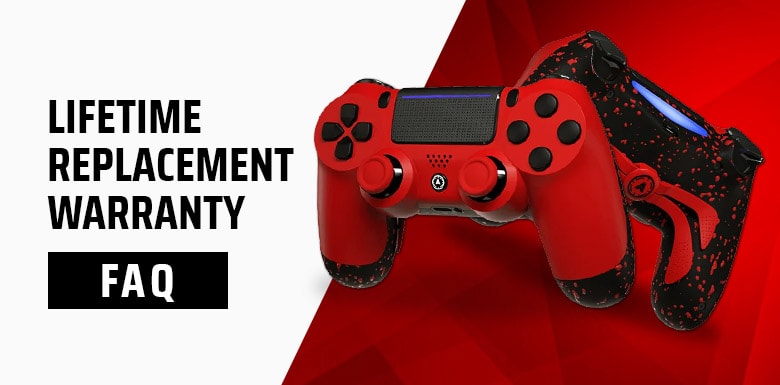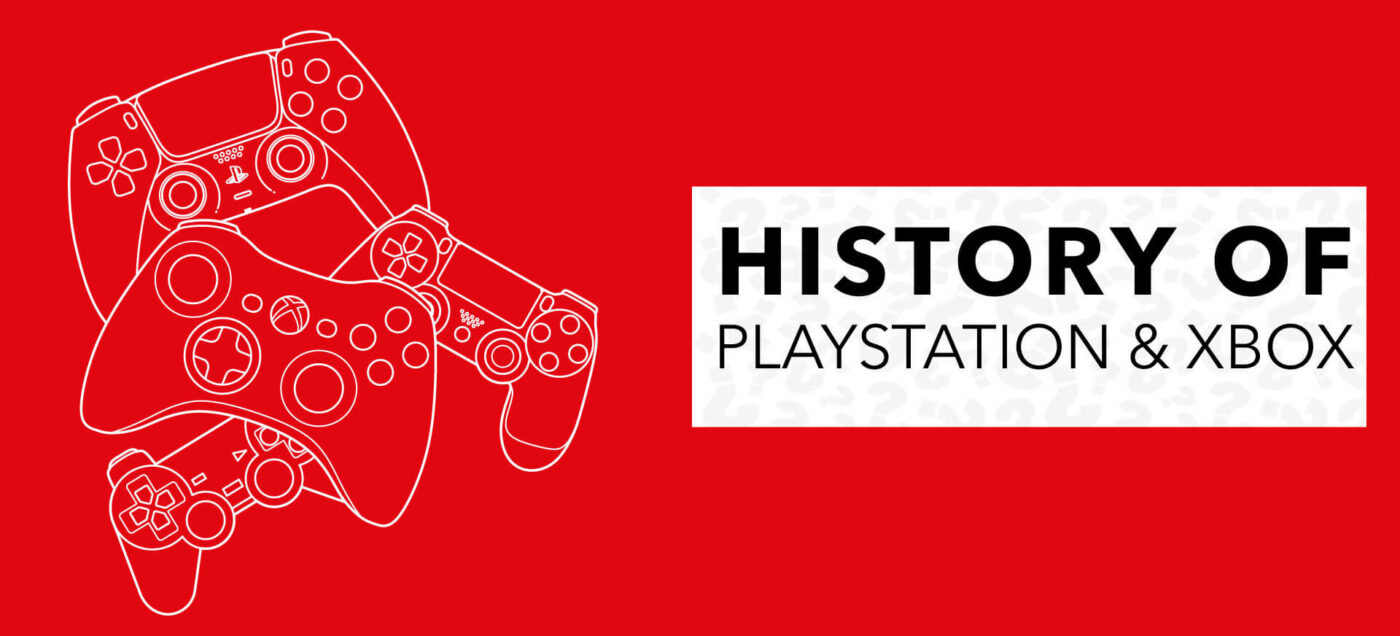Nowadays, all of us can enjoy unlimited Internet access, smartphones with all the latest information at our fingertips, laptops, tablets, smart TVs and the latest generation of consoles and controllers. But what was it like in the past? How did it all start? How has the game console evolved? What was the evolution of PlayStation consoles like? Today we have something for the trivia and history buffs as we take a look at the PlayStation history timeline and the Xbox console history! So sit back and get ready for a feast for console trivia aficionados!
PlayStation console history – how did it all begin?
The history of PlayStation, also known as PSX, began on 3 December 1994, when the first units hit the shelves of Japanese shops. Less than a year later, on 9 September 1995, the console was released in the US, and on 29 September the same year in Europe. The first PS was a 32-bit video game console, manufactured in Japan by Sony Computer Entertainment and designed by the eminent Ken Kutaragi. The PlayStation was to be developed in collaboration with Nintendo, as the SNES-CD – Sony would supply the CD-ROM reader and generally help with the system architecture. However, due to disagreements, Nintendo began working with Phillips, and in 1993 Sony began work on the console independently, adding the letter X to its name – after the system’s release, the letter was removed, but the abbreviation remained – PSX. Sales of the console reached 100 million units, and it immediately became iconic.
PlayStation console history – what came next?
The next point in the PlayStation history timeline was the production of the PS One – in June 2000, a scaled-down version of the console was released. This hardware allowed an LCD screen to be connected and plugged into a car’s cigarette lighter socket, so it could be used as a portable console. All games that are compatible with the PlayStation are also compatible with the PS one, and the main differences, apart from changes in appearance and the ability to connect a display, are a change to the console’s main menu and a security feature designed to prevent the installation of a modchip.
PlayStation console history – in full swing
The next big step in the evolution of PlayStation consoles came on March 4, 2000, with the official launch of the PlayStation 2. It all started in Japan, before spreading to the rest of the world. PS2 offered not only superb graphics capabilities, but also, an extremely cheap DVD player, and inside the hardware was a 64-bit MIPS architecture processor clocked at 294MHz, 32MB of RAM and 4MB of video RAM.
PlayStation console history – almost our times
The next great moment in the history of PlayStation came on 11 November 2006, with the launch of PlayStation 3. It sold in 86.8 million units. In the PS3 we could find an 8-core processor 3.2 GHz Cell Broadband Engine, 256 MB RAM, RSX Reality Synthesizer 500 MHz, 256 MB GDDR3 650 MHz @ 1.3 GHz (power of about 400 GFLOPS) and a Blu-ray drive.
PlayStation console history – getting closer to the end
And finally, we come to the present day in the history of PlayStation. PS4 had its premiere in November 2013. What was included in the PlayStation 4? An 8-core 64-bit AMD “Jaguar” processor, 8 GB of RAM, an AMD Radeon with 1.84 TFLOPS of power and a Blu-ray drive. Three years later, on September 15, 2016, we kept up with the PS 4 Slim version, which in terms of performance, was nowhere near the capabilities provided by its 2013 older sibling.
PlayStation console history – the holy grail
We’re slowly approaching the end of the evolution of PlayStation consoles, or the holy grail, albeit due to availability reasons rather than quality, the PlayStation 5, which premiered on 12 November 2020. The basic one includes a Blu-ray disc drive and supports games from both boxed distribution and digital distribution via the PlayStation Store and comes with one PS5 controller, which you can modify with AimControllers. The second variant, the PlayStation 5 Digital Edition, has a lower price due to the lack of an optical drive and only runs digital games. It features an SSD for fast data transfer and a significant improvement in graphics performance, an AMD GPU with support for ray-tracing technology, 4K resolution and the ability to run games at up to 120 frames per second.
Xbox console history – where did it all start?
Xbox history timeline began in November 2001. Xbox became the first console produced by Microsoft, who launched the hardware after the launch of Sony’s rival console PlayStation 2. First for fans in the American market, as European game players got their Xbox console only in 2002. The first Xbox was a processor (CPU, or central processing unit) in the form of a modified version of Pentium III, running at 733 MHz The next big thing was the graphics (GPU, or graphics processing unit), and in this case it was a modified Nvidia GeForce 3 NV2A 233 MHz RAM is 64 MB DDR, and the hard drive is 8 GB.
Xbox console history – what happened next?
The second point in the Xbox history was the Xbox 360 console. The successor to the Xbox console, the Xbox 360, hit the market in 2005, with a technical specification of IBM PowerPC Xenon processor, ATI R500 graphics, and 512 MB GDDR3 RAM. It was a genuinely great moment for Microsoft, as their seventh-generation console sold in far greater numbers than the first Xbox had.
Xbox console history – the Xbox One tale
The Xbox One is another piece of Xbox console history categorised as the eighth generation of consoles. Its name is a clear continuation of the ongoing trend of giving non-standard terms to new versions of hardware made by Microsoft. It fits in marketing-wise with the statement that the Xbox One is all-in-one. The point is to show the consumer that the console is suitable for gaming, watching movies, listening to music and many other things. It was officially launched in 2013. Nowadays, the latest iterations bear the name Xbox One X and Xbox One S and are a streamlined versions with superior performance. Xbox Series X and S feature an octa-core processor with AMD Zen 2 architecture and AMD RDNA 2 graphics with up to 52 active compute blocks. The most powerful chips deliver smooth and detailed visuals.
History of PlayStation and Xbox consoles – conclusion
As you can see, both consoles have gone through quite a transformation over the last decade. For years, designers from both companies have been outdoing themselves in creating more and more possibilities and facilities for gamers from all over the world. At times, one company takes the lead, at other times it’s the competition that takes the top spot. Both consoles have their distinct disadvantages, but both have their strengths too. What about you? Which console do you prefer?

















Latest news
How to Maintain Your Custom Controller to Prevent Drift, Stick Drift and Joystick Issues
How to Maintain Your Custom Controller and Prevent Drift, Stick Drift and Joystick Issues on [...]
Dec
Mastering the Custom Controller Setup for FPS Games
Master Optimising AimController for Competitive FPS Games – FPS Controller Setup Competitive Edge Ranked FPS [...]
Nov
Custom Controller Build for Racing and Fighting Games: PS5, PC & Xbox
Customising Controller for Racing & Fighting Games: Wireless Custom Controller Build, Design, and Style Racing [...]
Nov
Is a Customizable Game Controller Worth It?
Customisable Game Controllers in 2025: The Future of PC Gaming A controller is one of [...]
Oct
Best Controller Settings fo Battlefield 6: Best AimController Setup
The Best Controller Settings for Battlefield 6 BF 6 is set to redefine the first-person [...]
Oct
Key Gaming Trends of 2026
Key Gaming Trends of 2026 The gaming industry in 2026 is entering an age of [...]
Aug
How To Use a PS5 Controller on PC
How to Use the PS5 Controller on PC: A Complete Guide to Connect and Use [...]
Aug
Mortal Kombat Series – Legendary Fighting Game
Mortal Kombat Series – The Legendary Changing Fighting Game Mortal Kombat isn’t just another fighting [...]
Jul